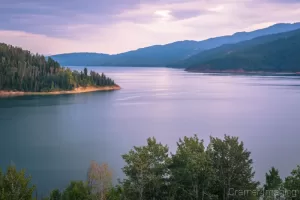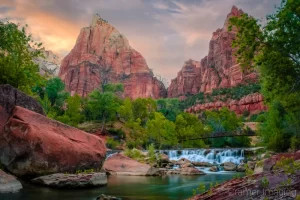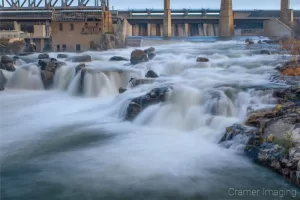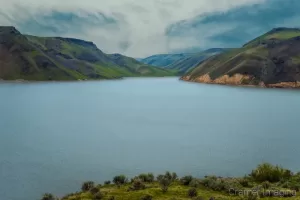What Goes Into Getting One of Our Landscape Photos
Shop
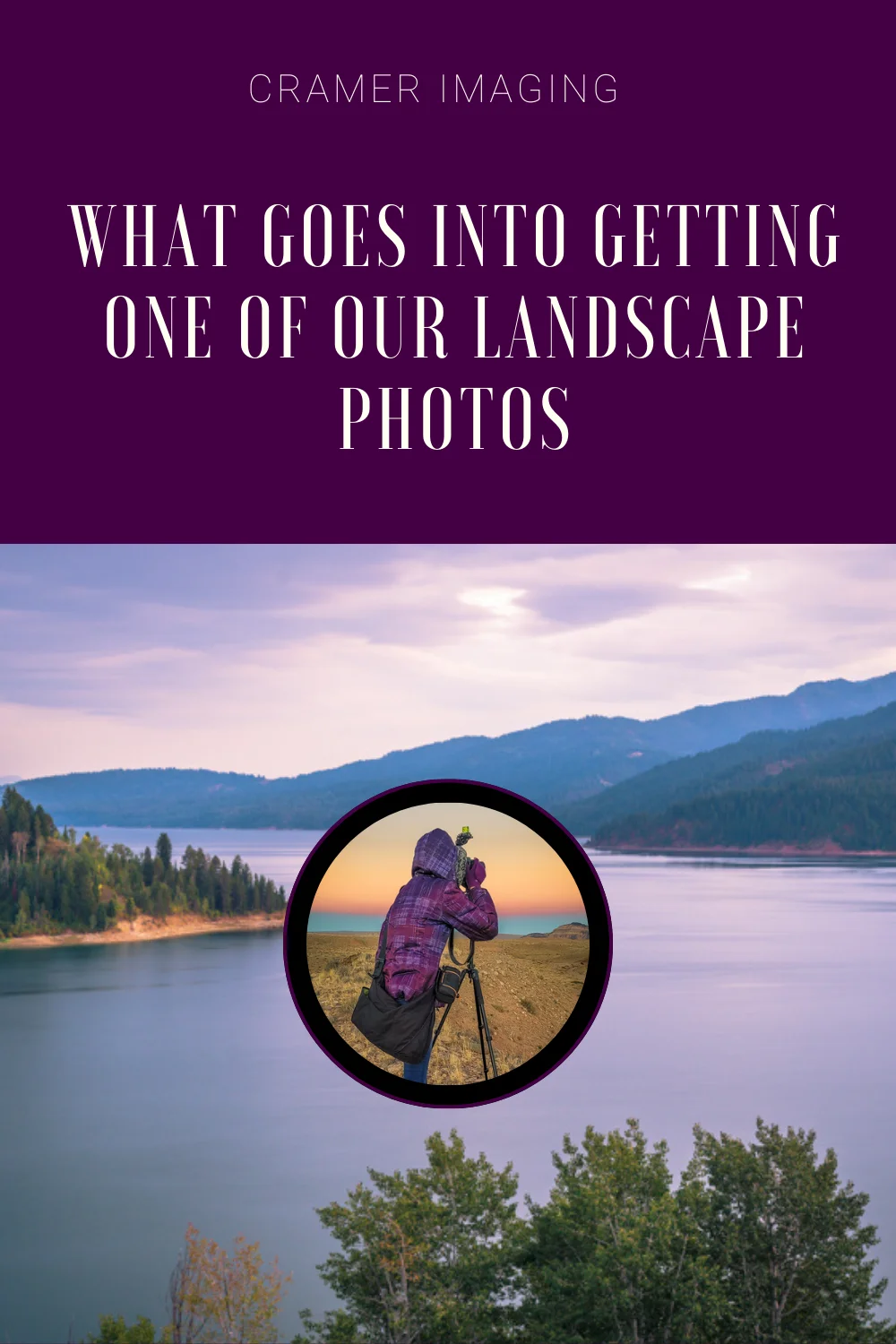
A lot of people out there seem to be of the mistaken belief that professional photography is as simple as clicking the shutter button and printing up the resulting photos. For truly professional photographers, nothing could be further from the truth. There’s a lot of work which goes into getting the kind of photos we’re proud to display. Much of it goes unseen by customers and clients. Today we’re discussing what goes into getting the kinds of landscape photos which you admire.
Each kind of photography (wedding, event, portrait, sports, wildlife, journalistic, travel, etc.) has its own process and standards which are used to create the final photograph whatever the genre. As I am a landscape photographer, I will be talking about what goes into getting landscape and nature photos.
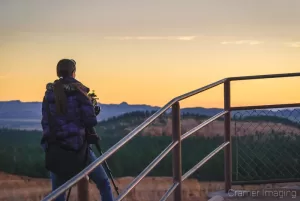
So What Actually Goes Into Getting Good Landscape Photos?
Unless I’m going for spring flowers from the garden, I can’t just walk out my door with my camera and take amazing nature photos. If I want landscape photos (besides urban landscape), I also can’t just walk out my door and start snapping away. Human civilization is built away from most of the spectacular landscapes as housing and industry aren’t often compatible with that kind of terrain without terra-forming. Because of this limitation, I must travel for my landscape photography.
Now that we’ve established that travel is an important part of landscape (and sometimes nature) photography, we run into another problem. I can’t just jump in the car and go anywhere whenever I want, snap a single picture, and have the shot we want. It doesn’t work that way. There’s a lot I actually have to plan for and around.
Subject Matter
First, I must decide on what subject matter to pursue. Sometimes that’s an easy choice such as when a client tells us something to photograph. In our Grand Teton Council Lakes project, I actually had an assignment to shoot specific lakes in the area. In other cases, I must do some research to figure out where to go. Sometimes I’ll go for touristy spots like national parks. Other times, I look for areas that are more out of the way or for angles which are not particularly common.
Since it takes time and money to travel, I want to do as much of this research from home as possible. Much of the research I require can now be done on the internet. I will also go to the library and even purchase books on various hikes and trails in the area. For an past shot of the American Falls spillway, we contacted people responsible for the American Falls Dam and found out when the spillway was open as a photo of a dry spillway isn’t particularly interesting.
Light Conditions
In landscape photography there are basically two windows of about 2-3 minutes each during each day which have the right kind of light for landscape photos. Those time intervals are right around sunrise and sunset. These windows are called the golden hour. During the golden hour, the harsh and direct sunlight is diffused by shining through more atmosphere than at midday. The shadows soften and so do the highlights. Sometimes you get lucky and the clouds above will line up just right to give you the same kind of light but that requires a huge amount of luck and is, therefore, unreliable.
Sometimes the terrain I elect to photograph won’t work with the golden hour windows. When I set out to photograph Ririe Reservoir, my first attempts were taken near sunset. They didn’t work out because Ririe Reservoir is pretty much in a canyon that runs north to south with limited access points. This means that, as the light becomes usable right around sunset, parts of the canyon light up nicely but other parts hide with shadows cutting across from the western wall. Sunrise would present the same problem with the eastern wall of the canyon. These conditions made the golden hour a poor option for the shot I was looking for.
Because of this problem, I went with a cloudy day for the photo instead. The light wasn’t as spectacular as it could have been, but it got rid of the harsh shadows and horrible contrast. It allowed me to take the kinds of landscape photos I envisioned taking.
Scouting
Of course once we’ve done the research, the picture (pun intended) is far from complete. I don’t usually want to get the same shot as everyone else, so I have to go in person and find something I like. I call this a scouting trip.
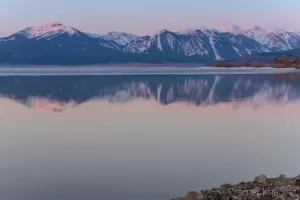
On the scouting trip, I’m not looking for a final photo. That’s not my goal. Instead, we’re both looking at angles and terrain. I have a phone app that tells me the angle of the sun at pretty much whenever we want so we can get an idea of how the light will fall. I get some test shots to make sure I will see what we want. If conditions that day look promising, we might wait around for sunset (assuming the landscape scene isn’t better with a sunrise shot) and see if we will have the right light. Sometimes it works and I get a final shot. Usually it doesn’t work but that’s expected.
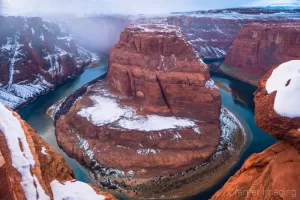
If we find that we have to hike in to the site, we will often try to combine the scouting trip and the final photo trip, but usually that results in disappointment. On the rare times it doesn’t, that’s an unexpected bonus.

Of course, the scouting trip can sometimes be a bust as well. If the weather is wrong and we can’t see the features we’re looking for, we can’t tell where to go and set up. Other times, we’ve had the client not like the angle we initially chose. In such cases, we have to make a second scouting trip.
The Photo Trip Itself
Next comes the actual trip. This one is harder to plan and schedule. I need to be onsite at either sunrise or sunset respectively, so we have to find out when that will be and plan accordingly. We have to figure out how long it will take to drive there from either our home or wherever we are staying (most of the time we already have this data from our scouting trip). Do we have to figure on hiking in? Might we have to spend the night, meaning hiking in and out with a flashlight?
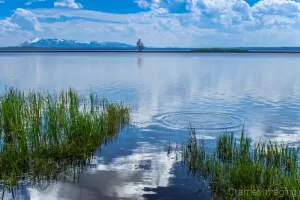
We also have to look at the weather report. If, for example, we aren’t going to get the light we need or critical parts of the landscape are going to be covered with clouds, we usually don’t even try and just reschedule. If the weather will be treacherous going or returning (like snowstorm), we reschedule. This can mean waiting days or weeks to get a shot.
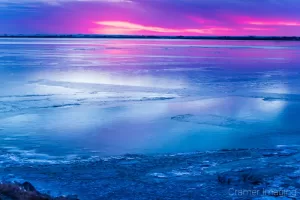
Of course, a lot of the time we get there and we still don’t get a shot. In trying to get the right shot of the Tetons, we traveled 2.5 hours each way no fewer than four times and it wasn’t until the fourth time that we got anything remotely useful.
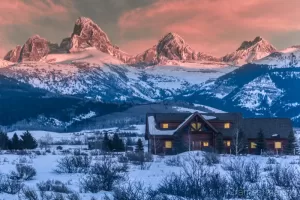
Getting the shot can be almost anticlimactic. We usually get there early. We want to be sure to hit the sweet spot for light. While sunrise/sunset time is pretty predictable, sometimes clouds can change things up a bit. While waiting I try for some other shots. I get several shots before and after the sweet spot just in case. I also get some behind-the-scenes shots. All in all, I’ll take a couple of hundred shots on an average shoot.

Processing
Next comes the culling and curating. I sit down at the computer and go through all of the photos I took. Most get rejected right off the bat for various reasons. Some photos might not make the fine art cut but are otherwise useful as stock photography. Some photos are useful for blog post illustration and not much else.

If one or more photos are good enough (and that doesn’t always happen), I will set it/them aside to process. I start processing in Lightroom using a number of carefully selected and crafted presets. Next, I’ll process it further in Photoshop if necessary. Sometimes I’ll do a sky replacement. It’s better to get the sky in the camera. However, if I have to travel 5 hours in the middle of the night every time I try for a shot, I’m going to look at ways to give me an interesting sky even if nature doesn’t cooperate.
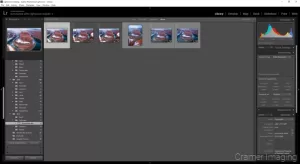
I also tend to remove people from shots. Several of our shots have had tourists down on trails taking selfies. Nothing really ruins the majesty of an incredible landscape like a group of people crowding around each other to get into a selfie.
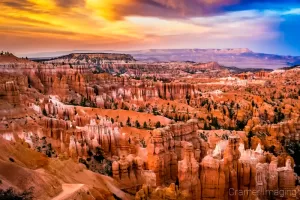
Culling and processing can take a few hours just to get a single photo which I feel is worth selling. I can work late into the night getting the photo(s) just right. Even then, some photos don’t look so good when I go back the next day. I end up cutting them too.
Publishing

Once I edit the photo(s), I must prepare it/them for publishing. I don’t just upload it to Facebook and call it a day. I have to write up a blog post article detailing how I went and got the shot and I document specifics of getting the shoot. Was the light cooperative or not? Did I have to compete with other photographers for space to take the photo? Did I luck into a wild animal showing up? Wild animals are notoriously uncooperative subjects for me.
I do take the time to schedule the photo(s) for social media. I have it/them scheduled for Facebook, Pinterest, and Instagram as I like rolling them out. Instagram has special requirements with cropping portrait-orientated photos which I must also mind. I must write captions and provide hyperlinks to the article when available to do so. Researching out hashtags can be a real time-consuming effort.
All things depending, it can easily take me a good couple hours just to get a single photo ready for publication. Then I have to make sure I share it in the right groups on Facebook once published. I can’t just set that to be automatic. I must do so manually with each photo. If I want the reach that Facebook can give me, I can’t neglect this part.

Summary
The process of bringing a landscape photograph to you is a long one. Some shots take months to get. A few have even taken years to bring off. We have to research out a location, scout out where I want to stand, go when the light conditions will be right for the shot, and process up the final photo(s). Many landscape photos require several attempts before capturing just the right shot. Travel can take hours.
It isn’t easy (it’s far more than just a quick shutter click) and it isn’t cheap (have you looked at the price of gas lately?), but some of the art I make makes all the cost and effort worth it in the end.
Now that you know just how much effort it can take me just to create a single landscape photo for sale, perhaps you would like to check out our online store where we have nothing but my best landscape photos up for sale. Each photo in this article with a hyperlink will direct you to its individual sale page or you can use this link to go to our store directly.
Best Sellers
Cramer Imaging Newsletter

Receive monthly updates in your inbox from us.

